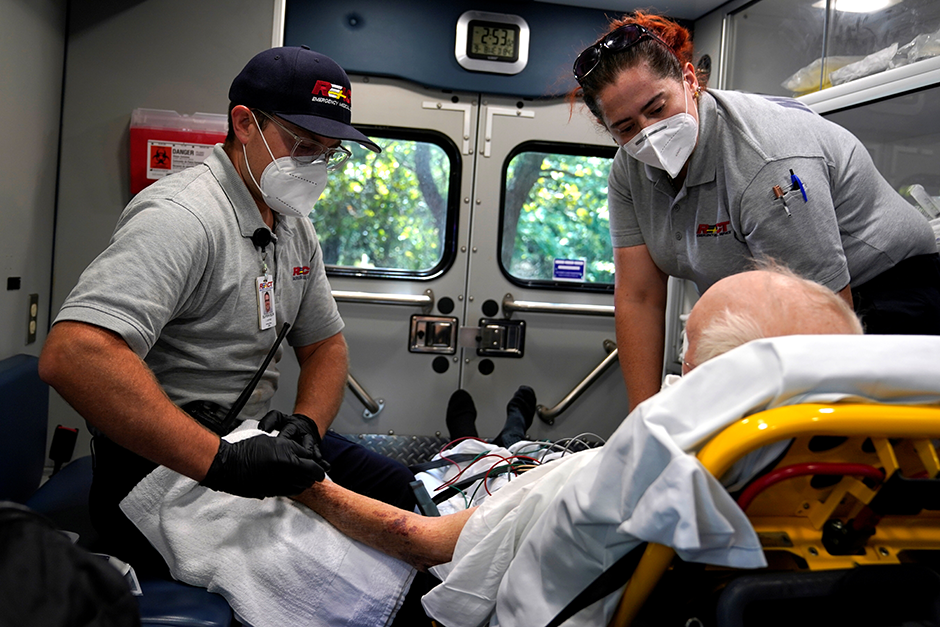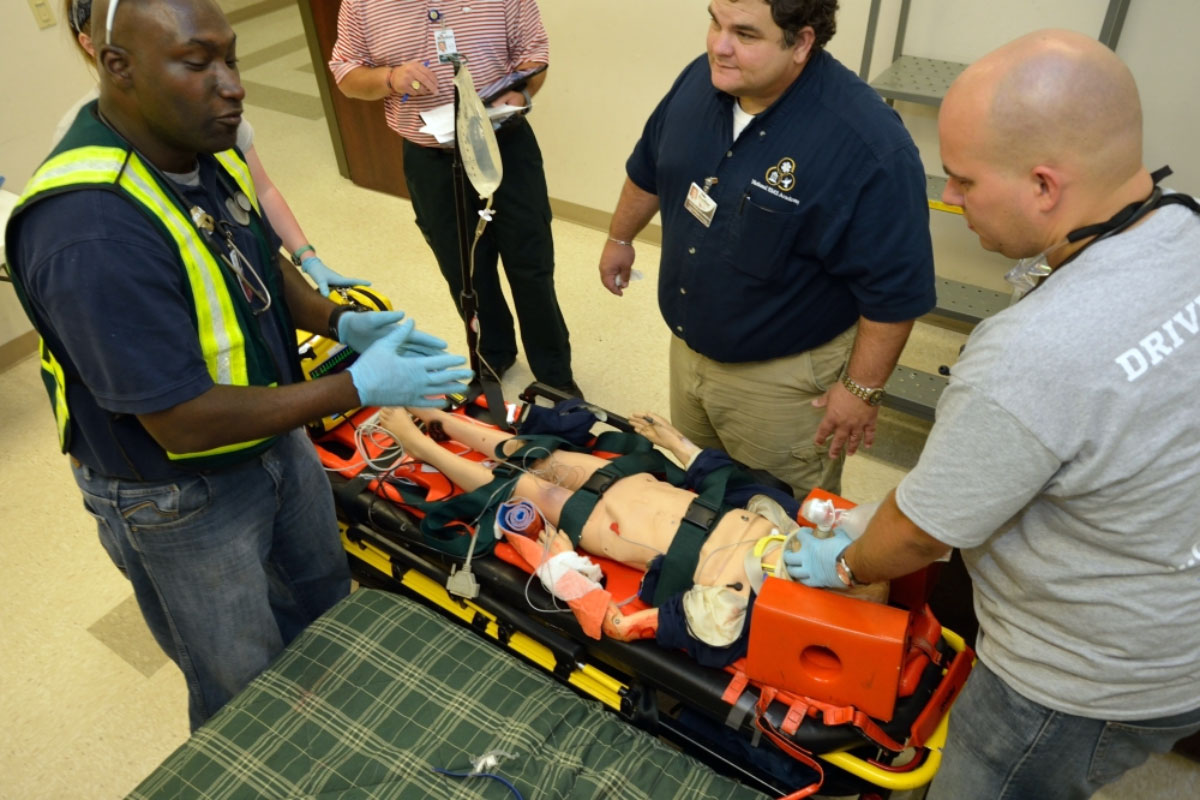The Reality of the EMS Staffing Shortage: A Crisis in Emergency Medical Services

Emergency Medical Services (EMS) play a crucial role in saving lives and providing essential medical care in times of crisis. However, across the United States, including states like Illinois, Texas, and Wisconsin, the EMS industry is facing a severe staffing shortage. This crisis has far-reaching implications for the quality and availability of emergency healthcare services in both rural and urban areas. In this article, we will delve into the heart-stopping stories and alarming statistics that highlight the pressing need to address the EMS staffing shortage. We will explore the reasons behind the shortage, its impact on communities, and the potential solutions that can help alleviate this crisis.
Table of Contents
The Growing Concern: The State of EMS Staffing
The shortage of EMS professionals is a nationwide issue that has been exacerbated by the COVID-19 pandemic. In Texas, EMS agencies are grappling with a significant workforce crisis, particularly in rural areas. The Texas Department of State Health Services (DSHS) reported that only 27% of licensed EMS professionals submitted patient care reports during the first eight months of 2021, indicating a significant decline in active EMS personnel. This shortage is attributed to factors such as burnout, increased risks associated with COVID-19 exposure, and better job opportunities outside the EMS industry.
Similarly, in Illinois, violence against EMS workers has amplified the staffing shortage. Assaults on paramedics and emergency workers have become distressingly common, leading to concerns about the safety and well-being of these professionals. Matt Clohessy, a paramedic-in-charge at the Chicago Fire Department, experienced firsthand the violence faced by EMS workers when he was struck by a patient. This incident highlights the challenges faced by EMS providers and the urgent need for solutions to address the shortage.
In Wisconsin, the shortage of EMS professionals has reached a critical level, particularly in rural communities. A report from the Wisconsin Office of Rural Health revealed that over 40% of state EMS agencies had staffing gaps, leaving no ambulance available for emergency calls. The reliance on volunteers to staff EMS agencies has become unsustainable, with 79% of the state’s EMS services relying on volunteers. The closure of EMS departments in some areas, such as Lake Mills, further underscores the urgency of finding solutions to the staffing crisis.
Understanding the Factors Behind the Shortage

To effectively address the EMS staffing shortage, it is essential to understand the underlying factors contributing to this crisis. Several key factors have emerged from the research and experiences of EMS professionals:
1. Increased Workload and Risks
The COVID-19 pandemic has placed an unprecedented burden on the healthcare system, including EMS agencies. EMS professionals have faced increased workloads due to COVID-19 precautions, hospital overcrowding, and the need for additional staff to handle the call volume. Moreover, EMS personnel often find themselves at risk of exposure to the virus, necessitating isolation or quarantine. The high infection rates among EMS workers, even among the vaccinated, have further strained the workforce and contributed to burnout.
2. Low Pay and Lack of Incentives
One of the primary reasons EMS professionals are leaving the field is low pay. The average pay rate for EMTs across the nation is approximately $17.05 per hour, which translates to around $35,000 per year. This level of compensation is often inadequate, considering the demanding nature of the job and the responsibilities entrusted to EMS professionals. The financial strain and lack of recognition have led many EMS workers to seek better-paying opportunities in other healthcare sectors or industries outside of the medical field.
Average Paramedic Salary In Texas
As of September 5, 2023, the average salary a paramedic can earn in Texas is $24.36. This average is calculated based on 605 reported salaries.
| Years of Experience | |
|---|---|
| Less then a Year | – |
| 1 to 2 years | $23.10/hr |
| 3 to 5 years | – |
6 to 9 years| $26.65/hr |
|
More than 10 years| $27.93/hr |
|
Reference: Indeed’s September 2023 Paramedic Salary Estimation.
3. Violence and Safety Concerns
EMS workers face significant risks to their personal safety while carrying out their duties. Assaults on paramedics, EMTs, and other emergency workers have become distressingly common, particularly in urban areas. The fear of violence and the traumatic experiences associated with such incidents have contributed to burnout and an overall decline in job satisfaction among EMS professionals. The alarming spike in violence has prompted legislative action in some areas, such as Chicago, where an ordinance imposing fines and jail time for assaulting emergency workers has been implemented.
4. Limited Access to EMS Education and Recruitment
Access to EMS education and recruitment programs has proven to be a challenge, particularly in rural areas. Limited resources, including educational facilities and instructors, pose obstacles to individuals interested in pursuing a career in EMS. Furthermore, the scheduling of paramedic education programs often does not accommodate shift work, making it difficult for aspiring EMS professionals to juggle their studies with their existing commitments. Inadequate funding for EMS education and the absence of statewide recruitment efforts have further compounded the shortage of new personnel entering the EMS workforce.
The Impact of the Staffing Shortage
The shortage of EMS professionals has significant repercussions for communities and the healthcare system at large. The lack of available ambulances and personnel directly affects response times during emergencies, potentially jeopardizing the lives of those in need. In rural areas, where mutual aid partnerships may not be readily available, the absence of EMS services can lead to delays in emergency care and increased risks for patients.
Moreover, the strain on existing EMS personnel due to understaffing and increased workload can have detrimental effects on their well-being and job performance. Burnout, mental health issues, and physical exhaustion are common among EMS professionals in this challenging environment. The shortage also places a financial burden on EMS agencies, as they are forced to pay overtime and rely on costly recruitment efforts to fill the gaps.
The ripple effects of the staffing shortage extend beyond emergency response. Hospitals and healthcare facilities also feel the strain as EMS agencies struggle to transfer patients from one facility to another in a timely manner. The backlog in patient transfers can lead to overcrowding in emergency departments and impede the overall functioning of the healthcare system. Even, caregivers in the senior care industry feel the impact too.
Addressing the EMS Staffing Crisis: Potential Solutions
To address the EMS staffing crisis, a multi-faceted approach is necessary, encompassing both short-term and long-term solutions. Here are some potential strategies that can help alleviate the shortage and ensure the provision of quality emergency medical services:
1. Competitive Compensation and Incentives
To attract and retain EMS professionals, it is crucial to offer competitive compensation packages that reflect the demanding nature of the job. Increasing the pay scale for EMTs and paramedics can help incentivize individuals to pursue a career in EMS and provide better financial stability for those already in the field. Additionally, offering incentives such as tuition reimbursement, signing bonuses, and career advancement opportunities can enhance job satisfaction and encourage EMS professionals to remain in the industry.
2. Recruitment and Retention Programs
Implementing comprehensive recruitment and retention programs is essential for replenishing the EMS workforce and addressing the shortage of new personnel. These programs should focus on increasing access to EMS education, particularly in rural areas, and raising awareness about the benefits and opportunities within the EMS industry. Collaborations between EMS agencies, educational institutions, and government entities can help create targeted initiatives to attract individuals to the field and support their professional development.
3. Enhanced Training and Support
Providing ongoing training and support for EMS professionals is crucial for their personal and professional growth. Continuous education programs, including specialized training in areas such as mental health support and violence prevention, can equip EMS workers with the necessary skills to navigate the challenges they face on the job. Additionally, implementing wellness programs, peer support networks, and counseling services can help mitigate the effects of stress and burnout, promoting overall well-being among EMS professionals.
4. Legislative Measures and Safety Protocols
Legislative measures and safety protocols play a vital role in protecting EMS professionals and deterring acts of violence against them. Implementing stricter penalties for assaulting emergency workers, as seen in Chicago’s recent ordinance, sends a clear message that such behavior will not be tolerated. Additionally, providing comprehensive training on de-escalation techniques, self-defense, and situational awareness can empower EMS professionals to mitigate potential risks and ensure their safety while on duty.
5. Collaborations and Partnerships
Collaborations between EMS agencies, healthcare systems, educational institutions, and government entities are essential for addressing the staffing shortage comprehensively. Establishing partnerships can facilitate the sharing of resources, expertise, and best practices, leading to more efficient recruitment and training processes. Furthermore, collaboration can help streamline patient transfers between EMS agencies and healthcare facilities, ensuring a smooth continuum of care for patients.
6. Funding and Resource Allocation
Sustainable funding is critical for addressing the EMS staffing crisis effectively. State and federal governments should allocate adequate resources to support EMS agencies, including funding for education programs, recruitment initiatives, and the provision of necessary equipment and technology. By prioritizing EMS in budget planning and policy decisions, policymakers can demonstrate their commitment to the well-being of communities and the provision of high-quality emergency medical services.
The Final Take Away
The EMS staffing shortage is a pressing issue that demands immediate attention and collaborative efforts from stakeholders across the healthcare system. With the lives of individuals depending on the availability and quality of emergency medical services, it is crucial to address the underlying causes of the shortage and implement effective solutions. By investing in competitive compensation, recruitment and retention programs, training and support, legislative measures, collaborations, and adequate funding, we can ensure the sustainability and resilience of the EMS workforce. Only through these concerted efforts can we guarantee timely and life-saving care for all individuals in need, regardless of their geographic location or the nature of their emergency. StaffDash remains committed to being a reliable partner in the EMS staffing field, dedicated to providing tailored solutions and supporting the industry’s growth and success.
Additional Information: StaffDash is a leading provider of EMS staffing solutions, offering tailored staffing services to EMS agencies across the United States.  With a deep understanding of the challenges faced by the EMS industry, StaffDash is committed to delivering high-quality personnel and flexible staffing solutions designed to meet the unique needs of each client. Through their extensive network of highly trained and experienced EMS professionals, StaffDash ensures reliable and efficient staffing support, allowing agencies to focus on delivering exceptional care to their communities.
With a deep understanding of the challenges faced by the EMS industry, StaffDash is committed to delivering high-quality personnel and flexible staffing solutions designed to meet the unique needs of each client. Through their extensive network of highly trained and experienced EMS professionals, StaffDash ensures reliable and efficient staffing support, allowing agencies to focus on delivering exceptional care to their communities.







